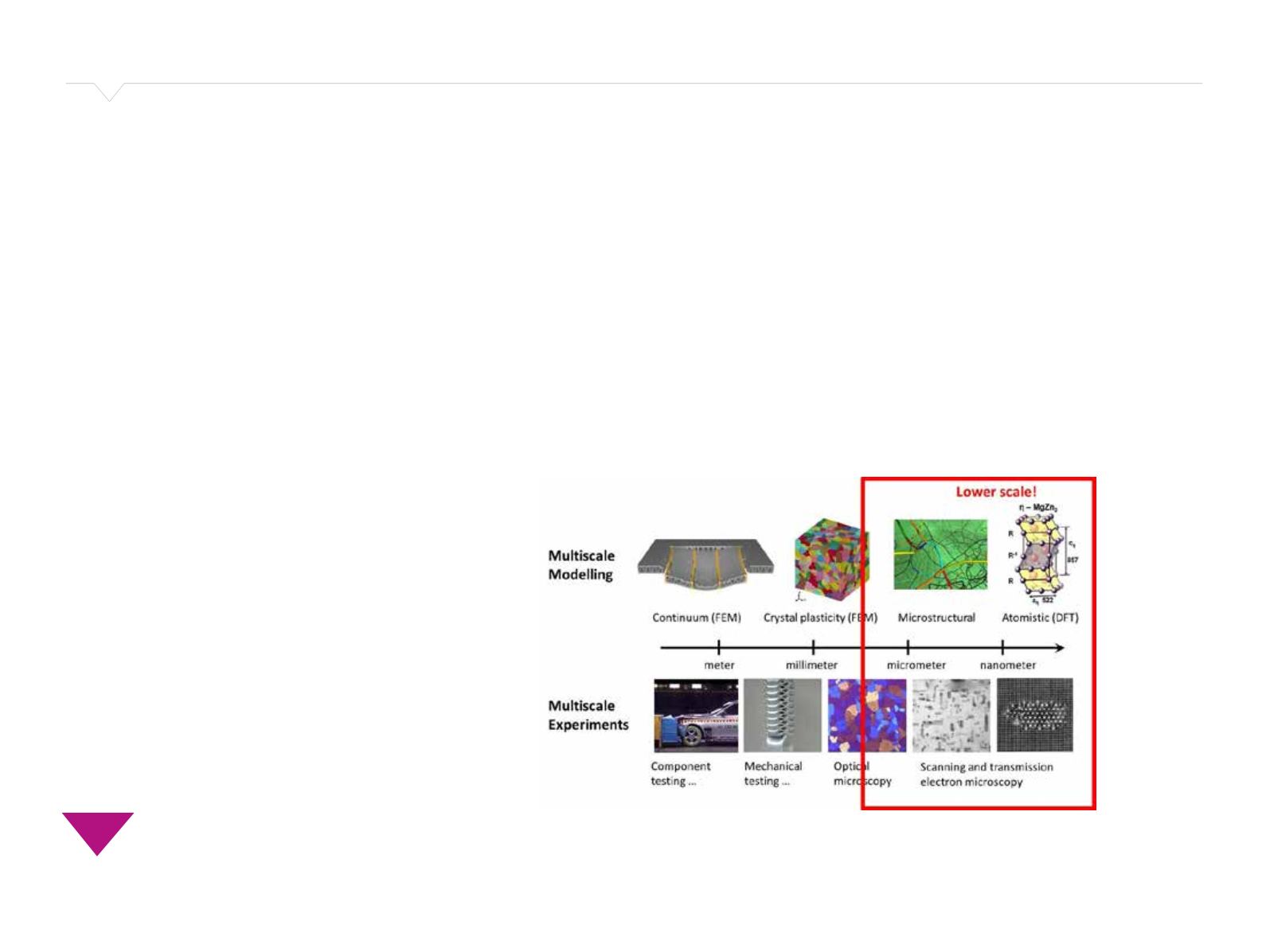

14
Research Programmes
This programme concentrates on the lower length scales of
materials, from atomic up to micrometre scale, and will provide
experimental and calculated input to the multi-scale framework
from the lower scale, see Figure 4. This will provide constitutive
models for microstructure evolution, strength and work
hardening for metallic materials, such as aluminium and steels,
and a foundation for development of physically based models
for crystal plasticity, continuum plasticity, damage and fracture.
The overall goal is to connect and coordinate the atom- and
microscale framework linking the models and the experiments
at the different scales. The results will provide a fundamental
understanding of mechanical properties and deformation of
metal structures in a multi-scale framework (from the nano-
scale to the complete structure). This will work as a basis for
achieving improved models and will be used in both model
developments and validations.
In 2015 two PhD students were hired to do experiments on
the lower scale. The PhD of Emil Christiansen (Department
of Physics) is focused around micro- and nanostructure
characterization of deformed aluminium alloys using
transmission electron microscopy (TEM). The objective is to
investigate the underlying physical mechanisms of ductile
fracture at low stress triaxiality. In short, this PhD will be
concerned with the interaction of dislocations with the
aluminium microstructure. He wants to study which role
the precipitation free zones (PFZs) play in ductile fracture. A
systematic study of PFZs and how they change as a function
of strain, quantitation of dislocation densities and type/density
of hardening precipitates will be studied. These data will act
as input to the different models used to describe deformation
response and will be used to verify and develop numerical
models in the related SFI CASA projects.
The PhD of Christian Oen Paulsen (Department of
Materials Science and Engineering) focuses on combining
experimental work and modelling activities to describe
the correlation between microstructure and mechanical
properties in multiphase steel. In all structural materials the
microstructure will be heterogeneous and the mechanical
properties will strongly depend on the local variations and
the thermomechanical history of the material. A systematic
experimental study including nanomechanical study of local
properties and in-situ testing using a scanning electron
microscope (SEM), with the possibility of cooling the material
to sub-zero degrees, gives input data for mathematical
models for understanding and describing the performance
of heterogeneous materials based on the microstructure
information. The experimental tests are combined with Digital
Image Correlation (DIC) to obtain detailed information about
the local deformation.
During 2016 two new PhD students will be hired, one on
atomistic and multiscale modelling and one within dynamic
strain aging.
Lower Scale
Head of Programme: Randi Holmestad
Figure 4: In a multiscale framework the lower scale programme covers the micrometer and nanometer scales for modelling and
experiments.
Research programmes


















